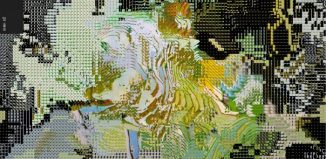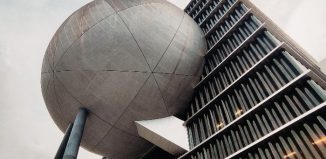KVT – tại Goethe và Nhà sàn Đức

KVT nhận thấy một điều thú vị là cả 3 triển lãm tuần này đều có yếu tố giáo dục xã hội. Một là dự án ảnh Rồng xanh của Cầu Long Biên tại Bookworm, hai là dự án ảnh Đối mặt dành cho người khuyết tật ở Thanh Hóa tại Viện Goethe, và ba là triển lãm sắp đặt của Jim Elinski tại Nhà sàn Đức. KVT thấy các bức ảnh được trưng bày tại viện Goethe rất chân thực, và triển lãm sắp đặt của Elinski thật đầy đam mê.
Xin lỗi, bản đầy đủ chỉ có ở trang tiếng Anh. Nếu bạn quan tâm nhiều hơn đến các bài viết của KTV và muốn có bản tiếng Việt cho các bài viết của KTV, xin hãy để lại ý kiến trong phần nhận xét. Tùy theo nhu cầu của độc giả, chúng tôi sẽ xem xét việc dịch toàn bộ bài viết của KTV sang tiếng Việt. ![]()
| Không phải nhà phê bình, “Kiếm Văn Tìm” là một người quan sát hay một con người có hiểu biết thú vị và công tâm về nghệ thuật Hà Nội, người đưa ra các chính kiến của mình và là một đặc phái viên báo chí giấu tên trung thực và công bằng. Xin hãy đưa các ý kiến của bạn vào phần bình luận dưới đây. |














Dear Sir/madam,
As you remain an anonymous figure, I will have to address my comments to your androgynous self. I would like to commend you, first, on an overall fair review of the exhibition ‘face to face’ but I would also like to comment on a few turns-of-phrase which you employed which, I think, lessen the impact of your review and cheapen the debate somewhat.
First, your idea that the images chosen could be superb, though ‘not in any real artistic way’ I would take great exception to and I think belies some greater understanding on your part of the broad spectrum of what “art/ART” is. Perhaps you might think of Folk Art, Ignorant Art, Social Realism or many another manner or school of art of the common person. Yes, while the intention of the people taking the pictures (many for the very first time ever) was not ‘artistic’ as such, the resulting presented images rival and, perhaps, exceed any to be found by, as you say, middle-class photographers and were made from perhaps the purest artistic intention – love. Love of subject, love of the act of photographing, love of looking. How is that NOT in any ‘artistic way’?.
I take your point – that the strength and poignancy of the images lies in their uncompromising directness and honesty – but your classifying leaves out the possibility of inclusion into the larger oeuvre of creative arts/Arts and is a bit ‘class -ist’ too as a result.
Also, rather than hundreds of images being discarded, it was actually thousands that were culled to select the resulting show. But why this needs to be mentioned by you in the review I do not understand. Of course, of COURSE, images are edited by every artist, photographer, painter, sculptor before trying to present a cohesive and communicative work to a public audience. The best photographer would admit freely to this – would you mention this fact in a review of the work of a James Nachtwey or an Elliot Erwitt (for example) or the digitally processed photography of a David LaChapelle? I somehow suspect not. So why here? What is your point, sir/madam? That the work of base amateurs requires more ‘selecting’ or some related idea?
Finally, I would like to address your use of the phrase “the inevitability of suffering that is the plight of poverty”. This is something only a person looking in from the outside would say; a person clearly not suffering, clearly not poor. I found it condescending. You may not and probably do not mean it to be even if you dont agree with me that it is. But there it is. Perhaps more careful editing of your words might have benefited your meaning.
I write this to you as the curator of the exhibition. I am a “professional” curator only in the sense that I was compensated for my work in choosing the images and their presentation but it is the first time I have mounted an exhibit of other’s work. From my perspective, the show this week at the Goethe presents something rarely seen in Hanoi, or Vietnam for that matter – an interesting show of really good photography, whether by a foreign or Vietnamese photographer. I believe it is an excellent exhibit. And I believe you believe it too. I tried, as much as possible, to keep myself and my ego, as a middle-class creative person and fellow photographer, as far towards the background as possible and to give an as direct, as clear and unfiltered, as impacting experience of the lives and the act of ‘looking’ by the people whose work you see on the walls of the Goethe as possible. There is more about my thinking in my “Curator’s Note” presented in the catalog. I learned a great deal about honesty, about purity of vision, about direct looking throughout the months of looking at the many images made by these artists. I hope in the largest of ways that the smallest hint of the verity of intent of these people’s work finds its way into my own.
Thank you sir/madam. Jamie Maxtone-Graham